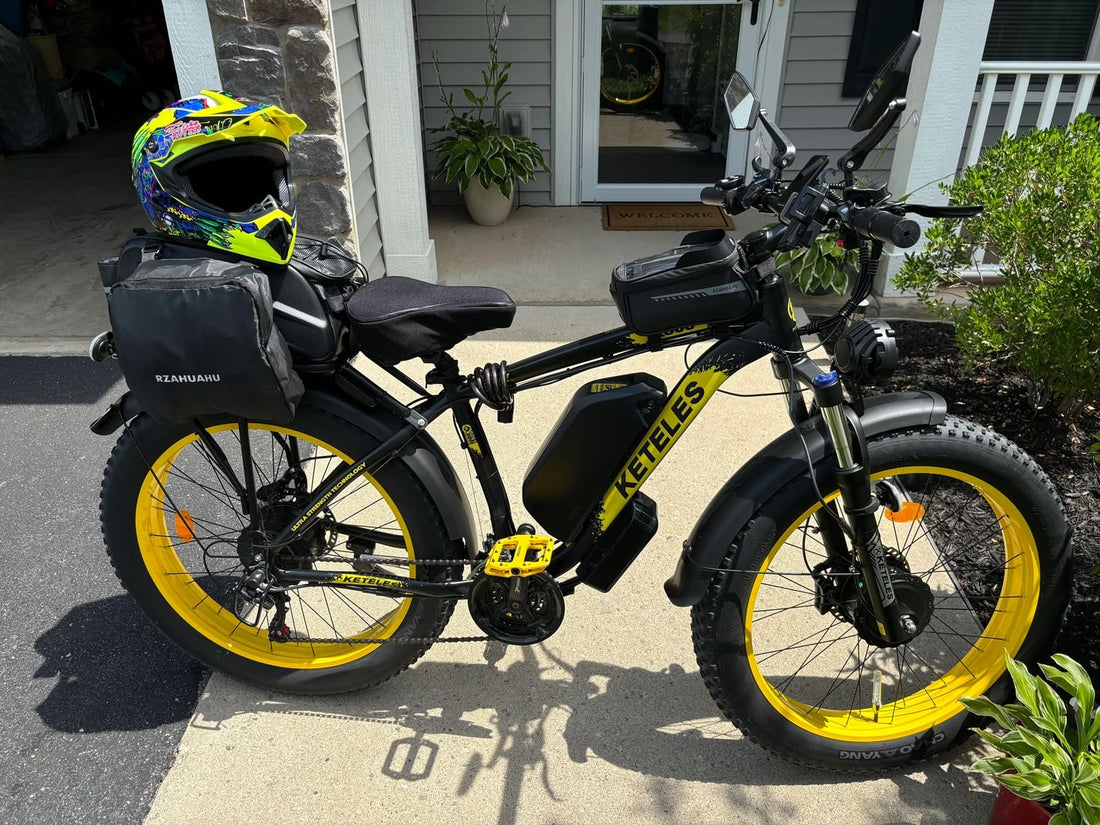
Mountain e-bikes: Perfect for Australia’s diverse terrain
Share
Preface: The compatibility of mountain bikes with Australian terrain
Australia's unique natural landscape and diverse terrain make it a paradise for mountain bike enthusiasts. From rugged mountains to vast jungles to coastal sandstone terrain, Australia's landforms provide a rich riding experience for mountain bikes. The emergence of electric mountain bikes has lowered the threshold for riding, allowing more people to easily explore these magnificent natural scenery.
Core elements of electric mountain bikes
1. Motor system
Mid-mounted motor vs. hub motor:
Mid-mounted motors provide better weight distribution and climbing ability, while hub motors are suitable for flat roads.
Motor power and torque:
Motor power determines the overall output capacity, while torque directly affects climbing performance. High-power, high-torque motors are suitable for steep terrain, providing stronger assistance and ensuring stability and controllability on complex terrain.
2. Battery and endurance
Battery capacity (Wh) and endurance:
Affects riding distance. Generally, 400Wh-700Wh batteries are suitable for long-distance adventures.
How to optimize battery life:
Avoid over-discharge and riding in high temperature/rainstorm environments, charge in time, and keep electric bicycles in a clean, suitable and comfortable environment.
Charging time and method:
The popularity of fast charging technology makes battery charging more convenient.
3. Frame and suspension system
- Hardtail vs. Full Suspension: Full suspension models are suitable for rugged mountains, while hardtails are lighter.
- Frame material (aluminum alloy, carbon fiber, etc.): affects the weight and durability of the bike.
4. Tire and brake system
- Tire size and tread design: adapt to different terrains, wide tires provide better grip.
- Hydraulic disc brake vs. mechanical disc brake: hydraulic disc brake provides better braking effect in slippery conditions.
5. Intelligent functions
- Electronic display and riding data monitoring: provides information such as speed, power, and endurance.
- Intelligent control system connected to APP: remote locking, custom riding mode and other functions improve convenience.
Electric mountain bike vs. traditional mountain bike
Difference in riding experience:
Mountain e-bikes make long-distance riding and steep challenges easier. Providing additional electric assistance can provide stable power output on steep terrain, reduce the decline in riding efficiency due to fatigue, and improve overall riding comfort.
Adapt to different scenarios:
Suitable for long-distance riding, steep climbing, and forest trail crossing.
Maintenance cost comparison:
e-MTB batteries and motor systems require regular maintenance, and the cost is slightly higher than traditional mountain bikes.
How to choose the right electric mountain bike?
- Budget vs. performance requirements: high-end models provide more power and longer battery life.
- Motor power and torque selection: choose the right motor according to the riding terrain.
- Suitable frame size and suspension system: full suspension is suitable for off-road riding, hardtail is more suitable for light mountain riding.
- Tire and brake system selection: large diameter tires provide better passability, hydraulic disc brakes improve safety.
Riding skills and maintenance of electric mountain bikes
1. Riding skills
How to use electric power efficiently on steep slopes:
When riding on steep slopes, it is best to switch to a lower gear first. Then, slowly increase the electric power level. This helps reduce motor load and battery use.
Maintain a stable cadence and avoid sudden acceleration or stopping to ensure smooth power output.
At the same time, adjust the center of gravity of the body, keep the front wheel on the ground, prevent slipping or loss of control, and improve climbing efficiency and safety.
Riding mode adjustment for different terrains:
Choose a suitable riding mode for different terrains, such as Trail or Boost mode for rugged mountains to provide stronger power, Eco mode for flat forest roads to save power, and low torque mode for slippery or soft ground to improve stability and grip.
Energy-saving riding skills:
During riding, by reasonably controlling the power mode, optimizing cadence and speed, choosing the right tire pressure, and reducing unnecessary braking and acceleration, you can effectively reduce energy consumption and improve endurance. In addition, using Eco mode for long-distance riding and maintaining a constant speed can help extend battery life.
2. Care and maintenance
Daily care and storage of batteries:
Check the battery status regularly and avoid long-term storage after the battery is fully discharged to prevent battery aging. It is recommended to store in a cool and dry place, and the ideal storage capacity should be kept at around 50% to extend the service life. In addition, use the original charger to avoid overcharging or over-discharging to ensure stable battery performance.
Maintenance of the motor and transmission system:
Clean the motor housing regularly to avoid accumulation of mud and sand that affects heat dissipation. Check whether the motor cable connection is stable to avoid looseness or damage. The transmission system (such as chain, flywheel, transmission) should be lubricated, cleaned regularly and applied with an appropriate amount of lubricant to reduce wear and improve transmission efficiency.
Inspection of the frame and brake system:
Check the frame regularly for cracks or structural damage, especially after high-intensity riding.
The brake system needs to be kept clean to avoid mud and sand affecting the braking performance.
The brake oil of the hydraulic disc brake should be replaced periodically, and the wear of the brake pads should be checked and replaced regularly to ensure riding safety.
Recommended popular electric mountain bike brands and models
High-end brand recommendations (such as Specialized, Trek, Bosch motor systems).
Cost-effective choices (such as KETELES, Haibike, domestic brands).
Future Trends and Development
- The development trend of mountain electric bicycles is lighter and more intelligent.
- Possible future technological breakthroughs (more efficient batteries, more powerful motors).
- Application of e-MTB in competitive events and outdoor adventures.
